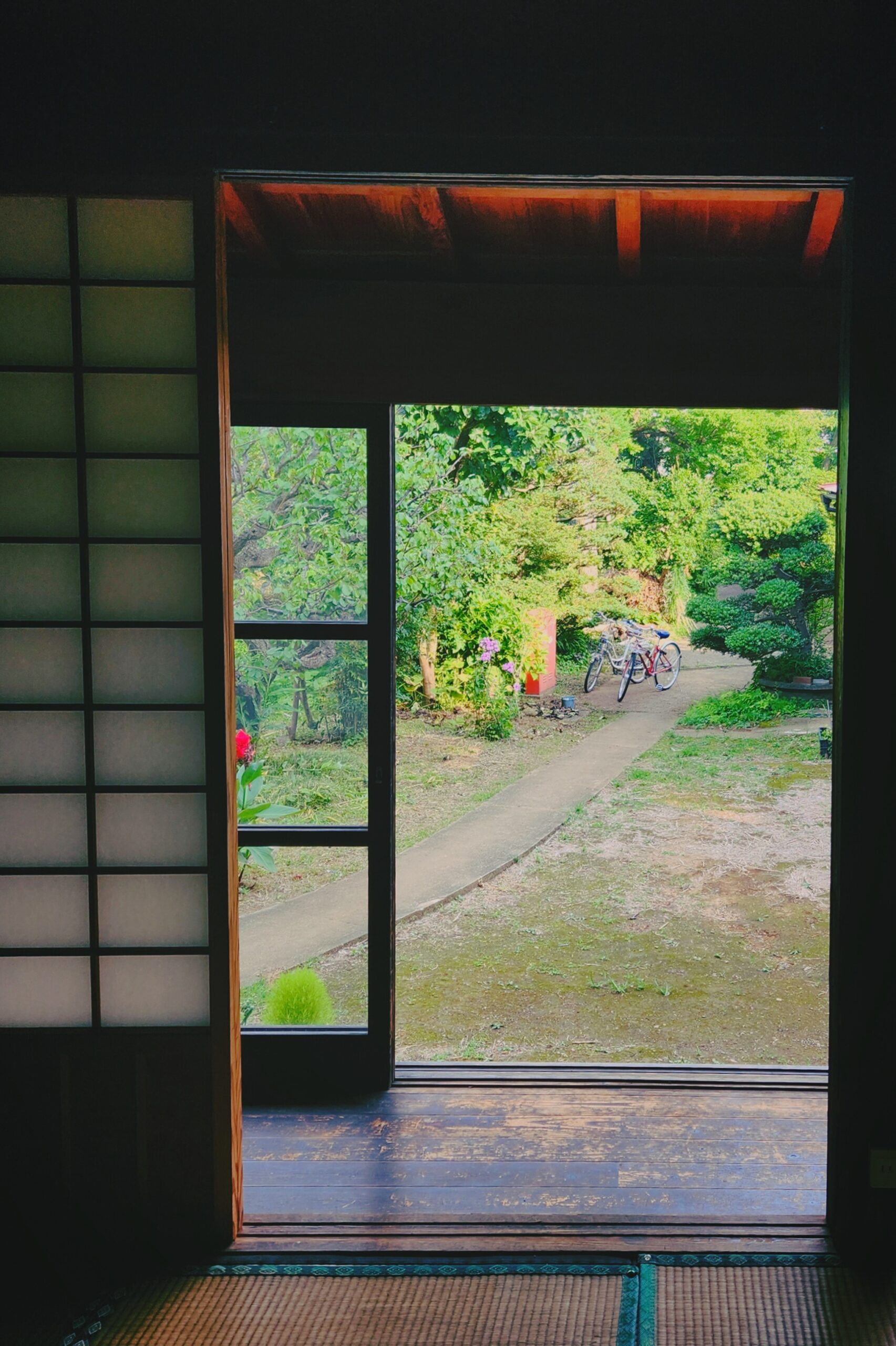Yesterday we were lucky enough to be invited to the family home of a recent acquaintance. It is over 150 years old and traditionally built… a little oasis in the middle of a metropolis. Most importantly for me, it was a way to see through the eyes of another life. A life I’ve never lived, one very different from mine. This was the house of farmers… rice, vegetables, and even silk at one point. A house surrounded by nature, that has seen the city multiply over time. It’s made from the land it is built on. Stone, rammed earth and wood. Only an earth quake every now and then has required some modern repair and reinforcement, other than that it very much still retains its old character.
Walking through the house, I was reminded of my passion for architecture… especially architecture as intimate as this, something which carries the aspects of people’s daily life. It reminds me of the words of Peter Zumthor, a Swiss architect who I admire, he says: Architecture has its own realm. It has a special physical relationship with life. I do not think of it primarily as either a message or a symbol, but as an envelope and background for life which goes on in and around it, a sensitive container for the rhythm of footsteps on the floor, for the concentration of work, for the silence of sleep. There is something special about when a person guides you through a space in which they grew up, you feel it in a different way.
I did not know him very long, but when I first met him I knew he was very kind and gentle. Friendly and curious to know the world and the people living in it. Maybe even a little similar to myself, although I can’t claim to have such a calming presence about me. His family home is being preserved now, protected and shared through photography. I felt really honoured that he took us around for free. He started by showing us the kitchen, a segment of the house that was technically outside. The ground was solid earth, hardened over a century of use. It was encased also by straw-reinforced earth along with heavy wooden beams, stained black from thousands of fires to keep a family warm during the winter.
There was a traditional outdoor stove, a black pot over a fire pit, soot covered bricks, chopped wood and straw baskets filled with freshly harvested vegetables… it felt like a living museum. Specific to the way one family lived for many, many years. He told us of how his father liked to sit by the fire, reading a book and drinking whisky. I almost felt as if I could smell the familiar sharpness of liquor, feel the heat of the fire and hear the pages of his book turning. Next, we moved inside to learn about the rest of the family. We took off our shoes and walked up the wooden steps to the soft tatami mats, made from local materials and by local hands. We stood in a wide area for guests, which was normally divided by a wooden barrier. One bedroom for grandmother, another for everyone else.
A wooden L shaped porch surrounded the house, a step down from the guest room so you could sit on the house floor and look out at the view. He explained for a moment that he liked this area the most when he was a child, it was always bright and there was usually a breeze. He could go out and play around in the soil… when he wasn’t creating trouble in the house by poking holes through the paper window shades, or doing things that children do no matter where they are born. We stood for a moment by the porch and felt that same breeze, the one that had been there before the house was built. It was a welcome, cool feeling for a body sweltering under tropical summer weather. As we walked around the corner, we could see that the back of the house was indeed much more dim. The trees and plants provided thick cover from the back, shade that may have been welcome in the summer but torture in the winter.
He told us that when he was younger he wasn’t able to appreciate the house as much as he did now. Time can make a huge difference… a house that was once considered simply old fashioned, is now considered a jewel of history. We slowly made our way back through the house and began exploring the garden a little, before sitting down to enjoy a little bite to eat. The conversation flowed easily and slowly, and I began to think that this was only the start of a long conversation that may continue into the future.
After the house visit, I felt calmer and happier. Somewhere between the short moments we shared, I threw a little unnecessary baggage off my shoulders. I suppose that feeling the way of life in the past can do that to you… you begin to realise that there is no need to move so fast. People in the past moved much slower, yet their progress was strong and sure. They achieved so much without the panic and anxiety that seems to be so prevalent in today’s world. It inspires me, especially as someone who regularly feels the pressure to rush (from who knows where). If they can take one step at a time, living their life in a way that’s true to themselves no matter how simple, then I can do the same. If I could translate one thing that this house taught me it would be this: slow down, be yourself… one day, even your roughest parts and your broken edges, will be a treasure in the eyes of another.

Leave a Reply